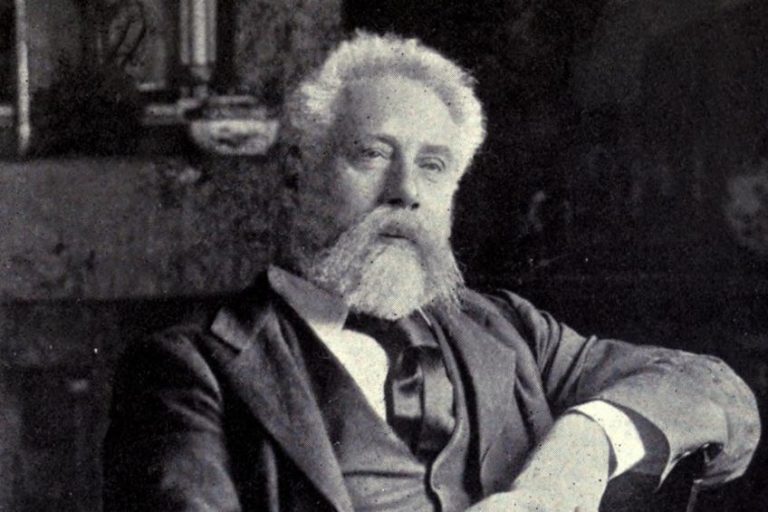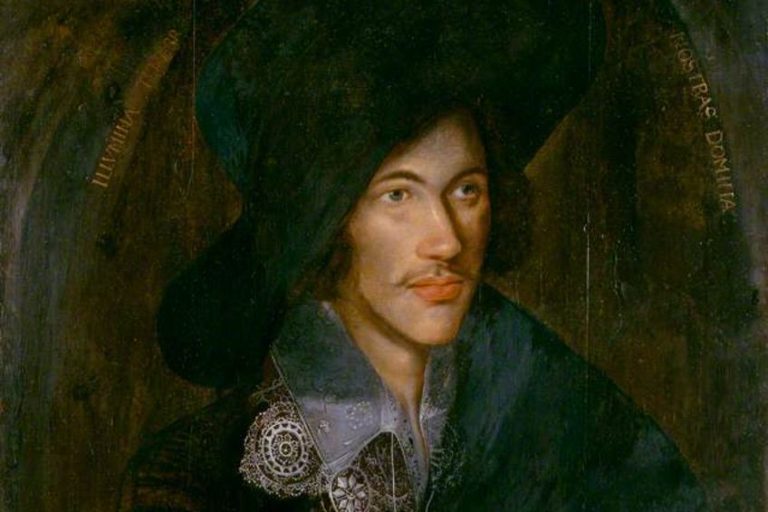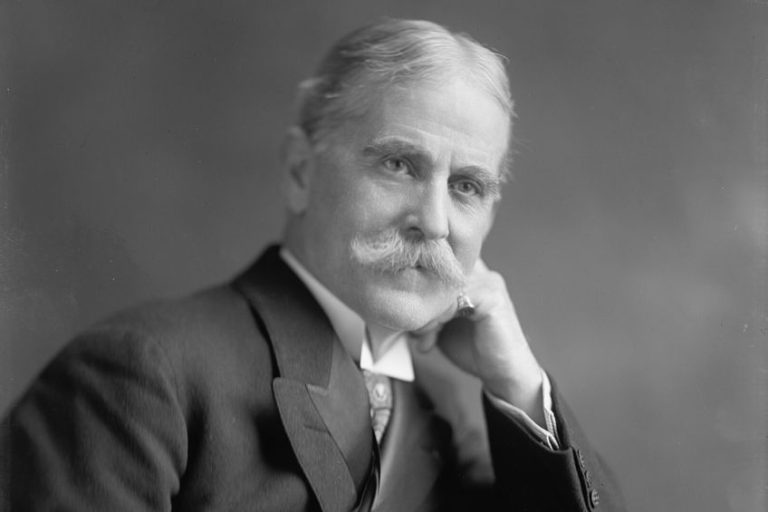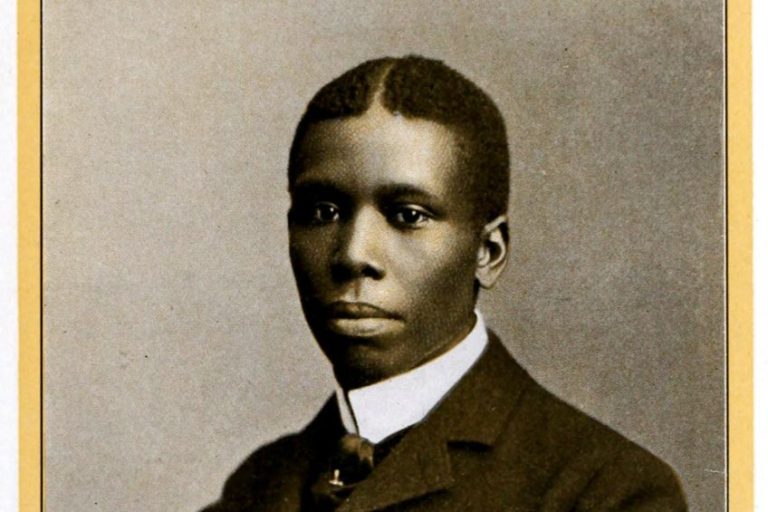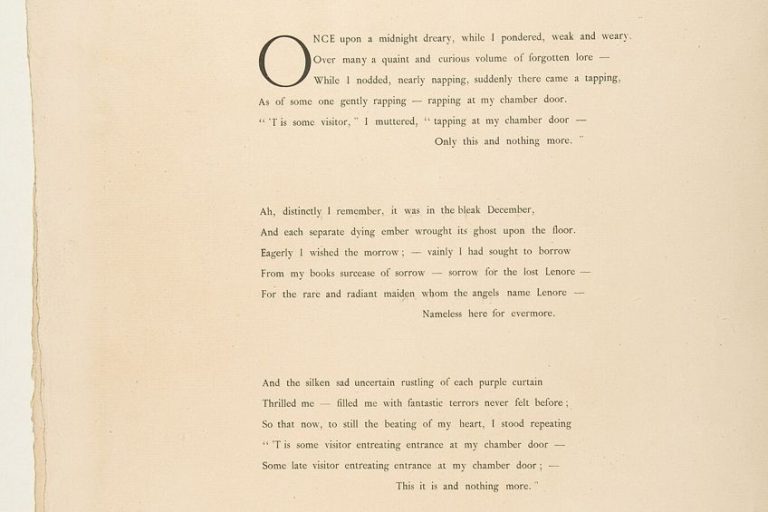“Because I could not stop for Death” by Emily Dickinson – Analysis
When it comes to the analysis of poetry, it can often be a great idea to analyze those poems that are highly unconventional. While traditional poetry, with its highly rigid structure, is important to examine, it is equally as important to look at those who break many of the established rules. This is why we will perform a Because I could not stop for Death by Emily Dickinson analysis today, and while this poem is not the most unconventional of the poems by Emily Dickinson, it certainly is one that is well worth the read and discussion. If you want to learn a little about the interpretation of Because I could not stop for Death by Emily Dickinson, you’re in the right place!
Because I could not stop for Death by Emily Dickinson Analysis
| Date Published | 1890 |
| Type of Poem | Lyric poem |
| Rhyme Scheme | Loose ABCB |
| Meter | Alternating |
| Topic | Death |
Death as a personified entity has been something of a fixture in literature for a very long time. From ancient texts like Everyman to more contemporary pieces of media, like Supernatural or Good Omens. We tend to like it when Death is an actual character with a proper noun for a name. And this is also the case in Because I could not stop for Death by Emily Dickinson.

The poem depicts a journey into the afterlife that is guided by the figure of death, and we will soon get into a Because I could not stop for Death by Emily Dickinson analysis to see how this particular poem makes use of this fairly common trope. However, before we get into the poem itself, let’s have a look at a quick summary for those who may not have the time to go over this whole thing!
Summary of Because I could not stop for Death by Emily Dickinson
While the entirety of this article will be concerned with an in-depth Because I could not stop for Death by Emily Dickinson analysis, it is beneficial to state a few points here before we proceed:
- The poem is about the journey one takes on the way to death. The reality is that death comes for us all, and the poem depicts death as a journey that is taken from the end of life to the afterlife. It is specifically depicted as a carriage ride in which the speaker is accompanied by other entities.
- The poem personifies Death as a character. While the poem does discuss the journey one takes into death, the primary means through which this is accomplished is through a personification of Death who serves as the speaker’s guide to the afterlife. This figure is depicted as kind and gentle.
- The poem uses irregular rhyme and meter. The structure of the poem uses a very loose ABCB rhyme scheme in which some stanzas use perfect rhyme, others use slant rhyme, and others use no rhyme. The meter, on the other hand, alternates between two different types of meter: iambic tetrameter and iambic trimeter.
And that is the summary of Because I could not stop for Death that we will provide. The remainder of this article will be a far more in-depth look at the poem, its themes, and the poet behind it all.
Move on to the next section and keep reading if you want to learn a whole lot more about this poem.
Biography of Emily Dickinson
| Poetic Movement | Romanticism |
| Years | 1830 – 1886 |
| Place of Birth | Amherst, Massachusetts, United States |
| Known For |
|
Emily Dickinson is one of those writers. She never had any kind of fame throughout her life, but she also never sought it out. She had a number of friends who were aware of her writing, and she even published a handful of her poems while she was alive, but that was all that came from that. She was also known in her community but lived as a recluse and was seen as an eccentric by all of the local people.
As she aged, she became even less welcoming of others and hardly ever left her bedroom. She may have had friends, but those friends were maintained through correspondence. She essentially spent her time in her Massachusetts home in the United States and never really left until she passed away. It was when she died that her work was truly discovered.

While she had published a whole ten poems in her lifetime, and a solitary letter, she had actually written nearly 1,800 poems. She was an immensely prolific figure, but no one knew it until they could no longer ask her anything about it. Her poetry was quickly taken on board as something unconventional and different for the time.
Her work was published by acquaintances, but they heavily edited it. It was only in 1955 that her complete work was actually released into the world, and it quickly became immensely popular and highly influential. She and Walt Whitman are often considered to be central figures in the development of free verse poetry in the 19th century and have been widely cited as some of the leading figures in American poetry of that era.
The Importance of Form in Emily Dickinson’s Poetry
While poetry is often noted for making use of formal changes to language to suit the poem’s needs, it is of special importance when examining the work of Emily Dickinson. Her work was very unique and strange for the era in which she was writing because she made very deliberate use of capitals, often eschewed titles entirely, used short lines, lacked or strange use of punctuation, and frequently used slant rhymes. Her work is free verse in nature, for the most part (aside from the present poem on display), and as such, it is important to note this when reading any work by Emily Dickinson. The meaning of Because I could not stop for Death requires an understanding of these formal elements of her poetic output.
However, we will keep that in mind as we continue with our analysis below.
In-Depth Because I could not stop for Death by Emily Dickinson Analysis
This poem is, first and foremost, an example of a lyrical poem. While Emily Dickinson tends to be known for her free verse poetry, she has also made use of more traditional poetry at times. This particular poem is one such occasion. The poem, in general, is about death. More specifically, the poem focuses on a supernatural journey to death in which Death becomes a personified character whom the protagonist interacts with throughout the course of the poem.
We are going to be performing an in-depth Because I could not stop for Death by Emily Dickinson analysis over the following sections in which we will examine the poem on a more line-by-line basis, but before we head into such a thing, it is worth pointing out a few of the general points. Some of those general points concern the rhyme scheme and metrical structure of the poem.
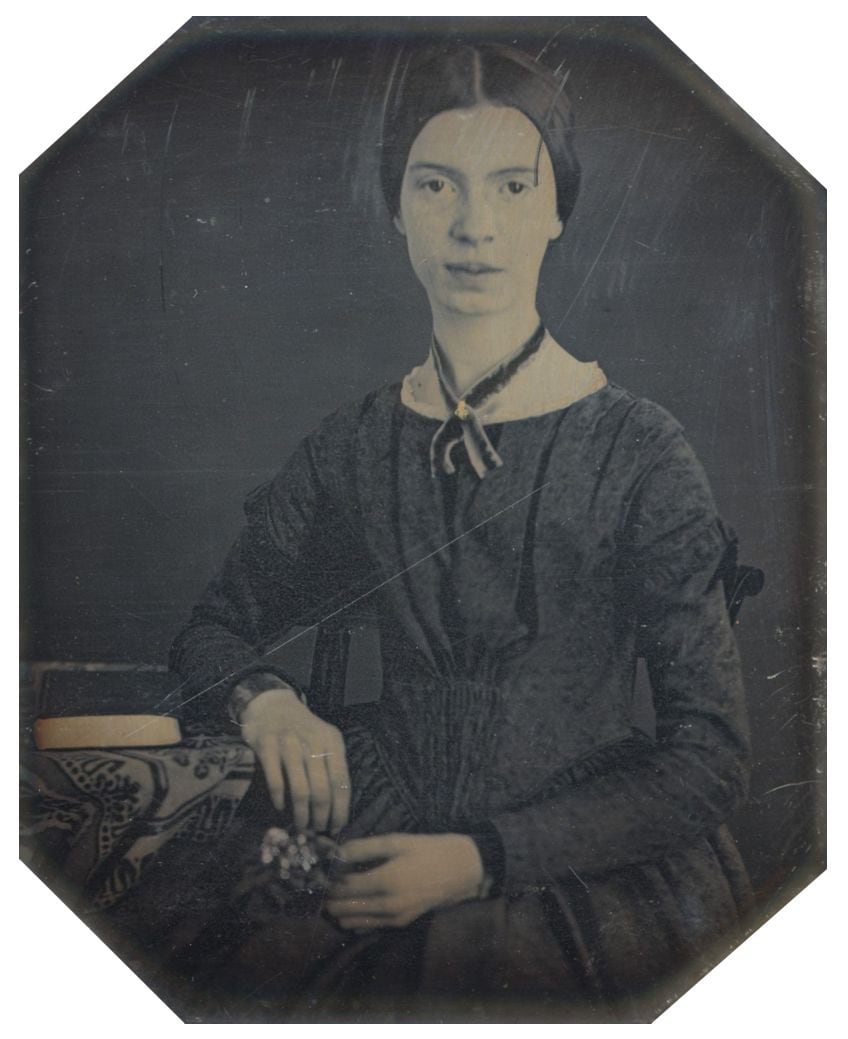
The rhyme scheme follows something of a loose ABCB structure. The first stanza follows this in a strict sense, but other stanzas often either forgo this or use slant rhyme. The use of slant rhyme was something that Emily Dickinson was particularly well known for doing, such as the slanted, near-rhyme of words like “chill” and “Tulle”.
When it comes to the metrical structure of the poem, on the other hand, it makes use of an interesting alternating style. The structure of each stanza makes use of iambic tetrameter for the first and third lines while it uses iambic trimeter for the second and fourth lines. This means that the first and third lines use an unstressed-stressed paired structure in which there are eight syllables, and the second and fourth lines use the same type of stressed structure but with six syllables.
This kind of adherence is a fascinating thing, and one worth keeping in mind as a rhythmic device.
With all of these general points out of the way, we can instead move on to the bulk of this discussion, which will be an in-depth Because I could not stop for Death by Emily Dickinson analysis. We will start where every poem starts, with the very first line in the very first stanza.
Stanza One
Because I could not stop for Death –
He kindly stopped for me –
The Carriage held but just Ourselves –
And Immortality.
The first line of the stanza opens with what has become the title of the poem. We see here the beginnings of the journey narrative that the poem wishes to express to us. The speaker notes how she cannot be the one who stops to let Death into her life, but Death is instead the one who comes for her. The second line even refers to Death stopping beside her as a “kindly” thing to do.

It is here where we should stop for a moment to address the use of the capitalization of Death. This is because Death is not a natural force in this poem as it is in the real world. Instead, Death is a character. It would not be correct to call Death a “person” in the traditional sense, as he (because the masculine pronoun is used to refer to this entity) is still a force of nature, but simply given a human-like form.
Death has come for the speaker, and Death has brought his Carriage, which is also capitalized. The Carriage is an important site for the poem as it is through this carriage that the journey to death can commence. The same line also refers to the Carriage as being for “Ourselves,” meaning the speaker and Death. However, the final line of the stanza also adds Immortality to the Carriage.
And we can presume, from the capitalization, that this is also a character.
Stanza Two
We slowly drove – He knew no haste
And I had put away
My labor and my leisure too,
For His Civility –
The second stanza opens with the journey to the speaker’s death. The character of Death has taken her but is in no hurry to take them from that place. The slowness of the journey could be seen as combining with the concept of Immorality from before, as slowness can drag on for a possible eternity. We have not been given such confirmation, but we know that this journey the speaker is on is not one that will conclude quickly.

The second and third lines are examples of lines that make use of enjambment as they form part of the same basic concept. The speaker needs to put aside her thoughts of work and play, stated as “labor” and “leisure”. She has died, and there is no longer the time in her life to think on such things. This can also be seen as a means of accepting one’s mortality.
The final line of the stanza refers back to Death again. Immortality has not received another word but is still in the Carriage alongside them. The figure of Death has received a capitalized pronoun of “His”, and this is a poetic technique often seen when poets refer to God.
They will refer to “Him” with a capital letter as a sign of respect or the authority of the godly position, and so we could interpret this as a somewhat godly moniker, as we do not generally use such an instance of capitalization for humans.
The final line ultimately gives us the reason that she must put aside her previous thoughts. It is because of Death’s Civility. This is yet another instance of a word that has received unusual capitalization. The figure of Death is a civil thing. She has decided to accept her fate and, as a result, she has decided to go willingly.
Stanza Three
We passed the School, where Children strove
At Recess – in the Ring –
We passed the Fields of Gazing Grain –
We passed the Setting Sun –
The third stanza uses a series of journey-oriented statements. It gives us three different things that she passed by on her way to her death. This may be seen as one’s life flashing before one’s eyes, but this is not definitively stated, but is suggested. She passes by a school, fields, and the setting sun. Each of these things are capitalized.

The School and the Children who play may refer to her childhood. She can think on what has come before, and then it has passed her by. Then she sees the “Fields of Gazing Grain” in the third line, and the metaphor of a field that has grown to its full height is evoked here. What was sowed had grown and can be interpreted as the prime of her life that she is now watching pass her by.
It is also interesting to note in this particular section of the poem that the metaphor of farming is commonly used in death. It is the Grim Reaper who is shown to come for us with his scythe, and a scythe is an instrument used to collect a harvest. The soul has grown and is ready to be taken.
This common metaphor may be evoked, but it is also done so in a more unusual sense as “Gazing Grain” is a strange term.
The final line refers to her passing the “Setting Sun”, which can be seen as the final days of her life. She has nearly completed her journey. She has seen her life before her, and it is time for her to pass further into the realm of death. The Carriage continues moving, and the kind figures of Death and Immortality still say nothing.
Stanza Four
Or rather – He passed Us –
The Dews drew quivering and Chill –
For only Gossamer, my Gown –
My Tippet – only Tulle –
The first line of this stanza may imply that the “Setting Sun” was a figure who passed the speaker by, and this allows her own old age and death to be personified. But this image quickly gives way to the imagery of the cold. We are given words like “Dew”, “quivering”, and “Chill”. She had not been cold before, but she suddenly is, and she does not have what she needs to remain warm.
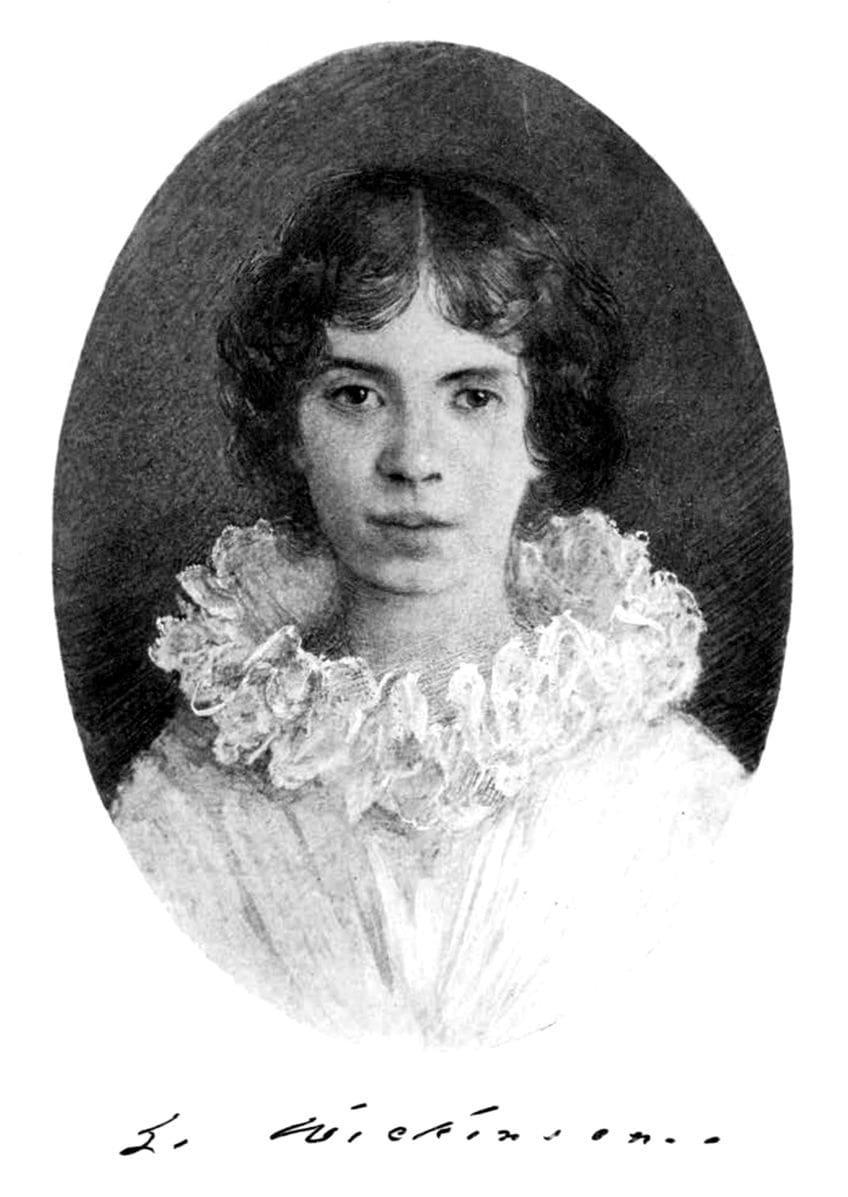
We are given some older and more obscure terms here to refer to why she is cold. Her “Gown” is “Gossamer”, meaning light and thin. And she wears a “Tippet”, which is a kind of clothing that covers the shoulders, but it is “Tulle”, meaning that it is made of a net-like, and therefore breezy, fabric.
She feels the cold of death coming upon her.
Stanza Five
We paused before a House that seemed
A Swelling of the Ground –
The Roof was scarcely visible –
The Cornice – in the Ground –
We reach a darker angle to death here as the characters in their Carriage come upon a House. This House is described in the second to fourth lines of the poem. It is not a pleasant house, and it has a swelled ground, a barely visible roof, and the cornice has fallen to the ground. It is a disappointing and dilapidated place, and the speaker realizes that this is her home. There can only be unhappiness in this place. Her death has come, and her eternity will be spent in such a place as this.

Stanza Six
Since then – ’tis Centuries – and yet
Feels shorter than the Day
I first surmised the Horses’ Heads
Were toward Eternity –
The final stanza tells us that much time has passed her by. It has been “Centuries”, but the rest of the stanza uses enjambment to create a single statement, and this statement is that regardless of it having been such a long time.
It does not feel as long as the journey toward the Eternity that she now experiences in this cold and unhappy place.
Because I could not stop for Death Themes
The meaning of Because I could not stop for Death is explored through the various themes that are on display in the narrative of the poem. These are fairly common themes that Emily Dickinson explored in her work, but they are on superb display in this particular poem. The poem concerns themes of death, time, eternity, and cycles.
Death is something that we all have experience with and it is a universal concept, and this is the central theme around which the other Because I could not stop for Death themes revolve. The use of time is understood through the lens of how quickly it passes us by before death comes for us, eternity is viewed through a similar lens as the movement towards death itself appears to stretch on for all time, and the cyclical nature represents a more circle of life approach to an understanding of death.

These themes need to be kept in mind when performing any kind of Because I could not stop for Death by Emily Dickinson analysis, and while these themes have been explored in the above analysis, you may have your own interpretation in mind. As I used to tell my students back in the day, I am not the arbiter of a poem’s meaning. You will have your own thoughts, ideas, and interpretations to contend with, and they are no more correct or incorrect than any other interpretations (so long as you can justify said interpretations).
The work of Emily Dickinson has inspired many over so many years, and Because I could not stop for Death is no different. This poem, with its personification of Death and examination into the journey from life to death, has served as an inspiration for many others. It is a fascinating take and one that we explored in our in-depth Because I could not stop for Death by Emily Dickinson analysis. Hopefully, it has been an enlightening look into the themes and meaning of Because I could not stop for Death, but always remember that your various interpretations also count.
Frequently Asked Questions
What Is the Meaning of Because I could not stop for Death?
This poem is about death, although the title likely gave that away. It is specifically about the journey to death while being guided there by the personification of Death. There are many ways that these kinds of poems can be interpreted, but the meaning is generally found in the attempt to come to terms with what death means for us and how we might try to learn to embrace these kinds of ideas as death will come for us all eventually.
Who Was Emily Dickinson?
This poet was a major figure in 19th-century American poetry and is seen as one of the main figures in the development of free verse poetry. However, Emily Dickinson was also a recluse in life, and she only published a tiny selection of the poems that she wrote. The vast majority of what she had written was only published after her death, and her full works were only published in the mid-20th century.
Is Because I could not stop for Death a Free Verse Poem?
Because I could not stop for Death by Emily Dickinson is not a free verse poem. The poem is instead a lyric poem that is written in an alternating meter alongside a loose ABCB rhyme scheme. This presents a far more structured style of poetry than free verse, which is characterized by a general disregard for the typical rules of poetry that we often find. However, many of Emily Dickinson’s other poems are perfect examples of free verse poetry.
Why Is Death Capitalized in Because I could not stop for Death?
The use of the capitalized form of Death is this way because it’s a proper noun. In the case of this specific poem, Death is a character. This means that while the poem does deal with the journey to death, with a lower-case letter, it does so with the assistance of the personified figure of Death, with an upper-case letter. So, in basic terms, Death is a character and that’s why the poem uses a capital letter for it.
What Are the Because I could not stop for Death Themes?
There are a number of Because I could not stop for Death themes that are worth exploring and discussing. The poem is mostly focused on death, but through the journey to death, we are also shown discussions of time in life, eternity in death, and the cyclical nature of life itself. All of these themes operate around the central idea of death and how we approach it in our lives.
Justin van Huyssteen is a freelance writer, novelist, and academic originally from Cape Town, South Africa. At present, he has a bachelor’s degree in English and literary theory and an honor’s degree in literary theory. He is currently working towards his master’s degree in literary theory with a focus on animal studies, critical theory, and semiotics within literature. As a novelist and freelancer, he often writes under the pen name L.C. Lupus.
Justin’s preferred literary movements include modern and postmodern literature with literary fiction and genre fiction like sci-fi, post-apocalyptic, and horror being of particular interest. His academia extends to his interest in prose and narratology. He enjoys analyzing a variety of mediums through a literary lens, such as graphic novels, film, and video games.
Justin is working for artincontext.org as an author and content writer since 2022. He is responsible for all blog posts about architecture, literature and poetry.
Learn more about Justin van Huyssteen and the Art in Context Team.
Cite this Article
Justin, van Huyssteen, ““Because I could not stop for Death” by Emily Dickinson – Analysis.” Art in Context. November 21, 2023. URL: https://artincontext.org/because-i-could-not-stop-for-death-by-emily-dickinson-analysis/
van Huyssteen, J. (2023, 21 November). “Because I could not stop for Death” by Emily Dickinson – Analysis. Art in Context. https://artincontext.org/because-i-could-not-stop-for-death-by-emily-dickinson-analysis/
van Huyssteen, Justin. ““Because I could not stop for Death” by Emily Dickinson – Analysis.” Art in Context, November 21, 2023. https://artincontext.org/because-i-could-not-stop-for-death-by-emily-dickinson-analysis/.




